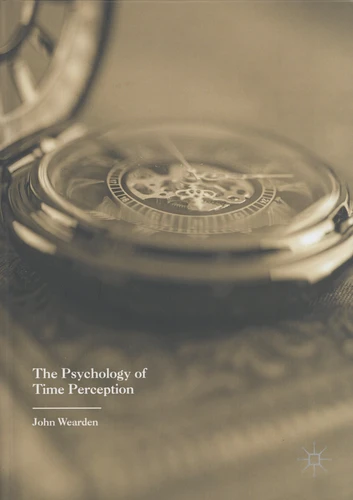The Psychology of Time Perception
Par :Formats :
Définitivement indisponible
Cet article ne peut plus être commandé sur notre site (ouvrage épuisé ou plus commercialisé). Il se peut néanmoins que l'éditeur imprime une nouvelle édition de cet ouvrage à l'avenir. Nous vous invitons donc à revenir périodiquement sur notre site.
- Paiement en ligne :
- Livraison à domicile ou en point Mondial Relay indisponible
- Retrait Click and Collect en magasin gratuit
- Réservation en ligne avec paiement en magasin :
- Indisponible pour réserver et payer en magasin
- Nombre de pages261
- PrésentationRelié
- FormatGrand Format
- Poids0.495 kg
- Dimensions15,0 cm × 22,0 cm × 2,0 cm
- ISBN978-1-137-40882-2
- EAN9781137408822
- Date de parution01/01/2016
- ÉditeurPalgrave MacMillan
Résumé
How do people perceive time ? This book presents a wealth of contemporary and classical research, including some of the history and philosophy of time perception. Influential internal clock-based models of time perception receive an in-depth but non-technical introduction and discussion. The role of cognition and emotion in perceiving time is also explored, as well as questions derived from time experience in daily life, such as why time seems to pass more quickly in one situation rather than another.
Classical and modern research on timing in children is reviewed, as well as work on time perception and time experience in older people. Leading recent models of animal timing are also discussed in a non-mathematical way.
Classical and modern research on timing in children is reviewed, as well as work on time perception and time experience in older people. Leading recent models of animal timing are also discussed in a non-mathematical way.
How do people perceive time ? This book presents a wealth of contemporary and classical research, including some of the history and philosophy of time perception. Influential internal clock-based models of time perception receive an in-depth but non-technical introduction and discussion. The role of cognition and emotion in perceiving time is also explored, as well as questions derived from time experience in daily life, such as why time seems to pass more quickly in one situation rather than another.
Classical and modern research on timing in children is reviewed, as well as work on time perception and time experience in older people. Leading recent models of animal timing are also discussed in a non-mathematical way.
Classical and modern research on timing in children is reviewed, as well as work on time perception and time experience in older people. Leading recent models of animal timing are also discussed in a non-mathematical way.

